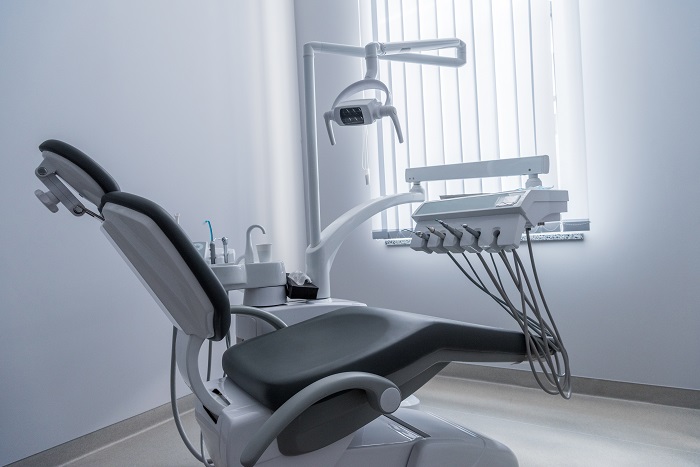
Getting More Information
Share This Page
JADA, Vol. 137 http://jada.ada.org February 2006 267
You are at the store, looking at long shelves of toothpaste, floss, mouthrinses and other oral care products.
What do you choose? Something on sale? Something with a coupon? The best choice is something that has the American Dental Association’s Seal of Acceptance. Since 1931, the ADA Seal has stood for safety and effectiveness, and that’s what really matters when you’re buying products for your family. The ADA Seal represents extensive clinical and laboratory research for each of the more than 400 consumer dental products on which it appears.
More than 300 manufacturers voluntarily submit their products to the ADA for comprehensive evaluation. They do so because they know that seven of 10 consumers recognize the ADA Seal. Although the U.S. Food and Drug Administration (FDA) regulates oral care products, the requirements for the ADA’s Seal of Acceptance often go beyond the FDA’s guidelines.
Not all of the products submitted for the Seal of Acceptance meet the ADA’s stringent requirements. A manufacturer who applies for the Seal must do the following:
To cover a small portion of the ADA’s evaluation and laboratory costs, manufacturers pay a nominal submission fee for each product. The ADA, however, funds the bulk of the Seal of Acceptance program as a service to the dental profession and to the public.
WHAT DOES THIS MEAN TO YOU AND YOUR FAMILY?
The Seal assures you that the product not only is safe but also does what it claims to do. For example, not all toothpastes are the same. The ADA laboratory ensures that toothpaste displaying the Seal contains the right amount of fluoride suspended in a formula that releases the fluoride so that it adequately protects tooth enamel while you brush.
SHOPPING AROUND FOR MORE INFORMATION?
Visit the ADA’s Web site (“www.ada.org”) for the following information:
Prepared by the ADA Division of Communications, in cooperation with The Journal of the American Dental Association and the ADA Council on Scientific Affairs. Unlike other portions of JADA, this page may be clipped and copied as a handout for patients, without first obtaining reprint permission from the ADA Publishing Division. Any other use, copying or distribution, whether in printed or electronic form, is strictly prohibited without prior written consent of the ADA Publishing Division.
“For the Dental Patient” provides general information on dental treatments to dental patients. It is designed to prompt discussion between dentist and patient about treatment options and does not substitute for the dentist’s professional assessment based on the individual patient’s needs and desires.
FOR THE DENTAL PAT I E N T . . .
Copyright ©2006 American Dental Association. All rights reserved.
You are at the store, looking at long shelves of toothpaste, floss, mouthrinses and other oral care products.
What do you choose? Something on sale? Something with a coupon? The best choice is something that has the American Dental Association’s Seal of Acceptance. Since 1931, the ADA Seal has stood for safety and effectiveness, and that’s what really matters when you’re buying products for your family. The ADA Seal represents extensive clinical and laboratory research for each of the more than 400 consumer dental products on which it appears.
More than 300 manufacturers voluntarily submit their products to the ADA for comprehensive evaluation. They do so because they know that seven of 10 consumers recognize the ADA Seal. Although the U.S. Food and Drug Administration (FDA) regulates oral care products, the requirements for the ADA’s Seal of Acceptance often go beyond the FDA’s guidelines.
Not all of the products submitted for the Seal of Acceptance meet the ADA’s stringent requirements. A manufacturer who applies for the Seal must do the following:
- supply objective data from clinical and/or laboratory studies in compliance with ADA guidelines that support the product’s safety and effectiveness;
- submit ingredient lists, labeling claims and other pertinent product information for review and approval;
- provide evidence that manufacturing and laboratory facilities are properly supervised and are adequate to ensure purity and uniformity of the product.
To cover a small portion of the ADA’s evaluation and laboratory costs, manufacturers pay a nominal submission fee for each product. The ADA, however, funds the bulk of the Seal of Acceptance program as a service to the dental profession and to the public.
WHAT DOES THIS MEAN TO YOU AND YOUR FAMILY?
The Seal assures you that the product not only is safe but also does what it claims to do. For example, not all toothpastes are the same. The ADA laboratory ensures that toothpaste displaying the Seal contains the right amount of fluoride suspended in a formula that releases the fluoride so that it adequately protects tooth enamel while you brush.
SHOPPING AROUND FOR MORE INFORMATION?
Visit the ADA’s Web site (“www.ada.org”) for the following information:
- a shopping list of all over-the-counter oral care products with the ADA Seal;
- interactive and educational oral health games for kids;
- a virtual tour of the ADA’s laboratory;
- tips for parents on maintaining oral health for the entire family;
- animations showing proper brushing and flossing techniques.
Prepared by the ADA Division of Communications, in cooperation with The Journal of the American Dental Association and the ADA Council on Scientific Affairs. Unlike other portions of JADA, this page may be clipped and copied as a handout for patients, without first obtaining reprint permission from the ADA Publishing Division. Any other use, copying or distribution, whether in printed or electronic form, is strictly prohibited without prior written consent of the ADA Publishing Division.
“For the Dental Patient” provides general information on dental treatments to dental patients. It is designed to prompt discussion between dentist and patient about treatment options and does not substitute for the dentist’s professional assessment based on the individual patient’s needs and desires.
FOR THE DENTAL PAT I E N T . . .
Copyright ©2006 American Dental Association. All rights reserved.


